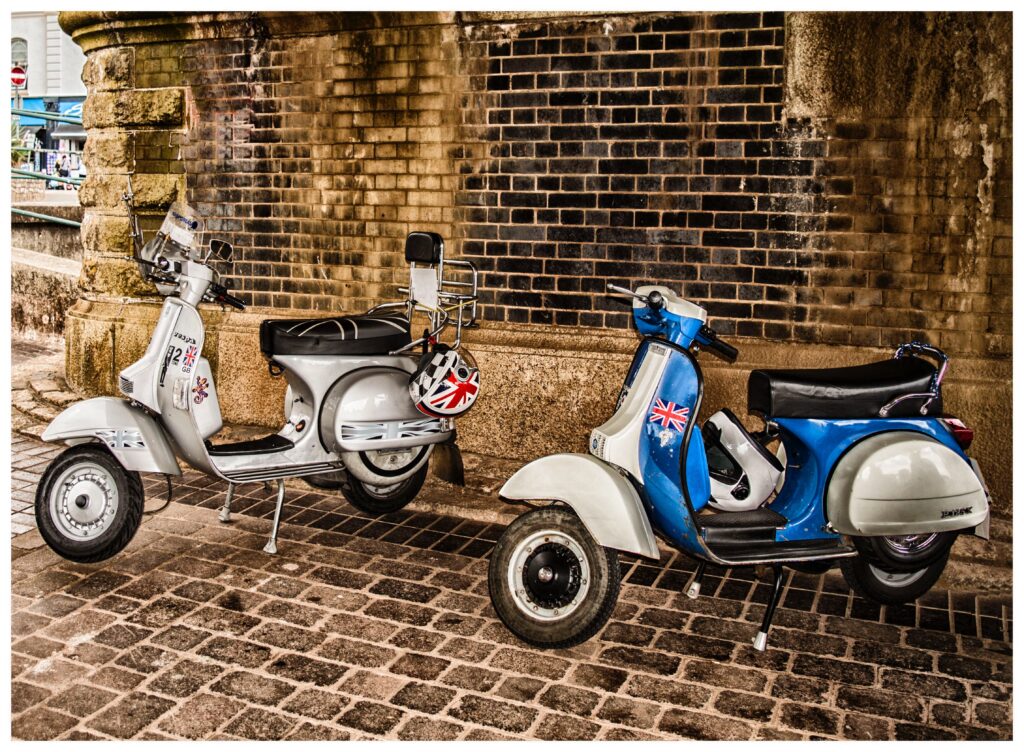Simple safe winter riding tips for scooter owners

Winter doesn’t mean you have to store your scooter away until the brighter months. Here the team at Bikesure come up with 10 simple winter riding tips that will ensure you can carry on ridingr throughout the season.
1. Traction is key
One of the primary challenges faced by scooter riders in winter is reduced traction. Cold temperatures, rain, snow, and icy roads can make surfaces slippery, increasing the risk of accidents.
To combat this, invest in high-quality winter tyres designed for enhanced grip on slippery surfaces. These are specially formulated to provide better traction in cold and wet conditions, offering a safer ride.
2. Layer-up for warmth
Winter temperatures can be unforgiving, and wind chill while riding a scooter can exacerbate the cold. To combat the cold, layer up with thermal clothing to retain body heat. Wear windproof and waterproof outer layers to shield against the biting winter winds and unexpected precipitation.
Don’t forget to invest in insulated or even heated gloves, a thermal balaclava, and waterproof boots to keep extremities warm and dry. If you spend a lot on your motorcycle gear, it’s good to know that you can get helmet and leathers insurance from just £29.99 a year.

3. Be visible, be safe
Winter days are shorter and visibility can be compromised in adverse weather conditions. Enhance your safety by making yourself as visible as possible to other road users.
Equip your scooter with bright, reflective clothing and accessories. Consider adding reflective tape to your vehicle or wearing a high-visibility vest. Proper lighting is also crucial, so check that your scooter’s headlights, taillights and turn signals are in optimal working condition,
4. Slow and steady wins the race
Winter riding demands a more cautious approach. Reduce your speed and increase your following distance to allow for longer stopping distances. Avoid sudden acceleration, deceleration and sharp turns as these actions can lead to loss of control on slippery surfaces. Smooth and deliberate movements are key to navigating roads safely at this time of the year.

5. Be aware of road conditions
Winter weather is unpredictable, and road conditions can change rapidly. Stay informed about the forecast and your route before embarking on your journey.
Consider using weather apps or checking local transportation websites for real-time updates. If conditions are particularly treacherous, it might be safer to delay your ride or opt for alternative transportation.
6. Mind your brakes
Scooters rely heavily on effective braking systems, and winter conditions can be harsh on these crucial components. Ensure your brakes are in top-notch condition before the onset of winter. Regularly check brake pads, fluid levels and responsiveness. Additionally, practise gentle braking to prevent skidding on icy surfaces. If you notice any issues, consult a professional mechanic to address them promptly.
7. Plan your toute carefully
Wintery roads may necessitate a reassessment of your regular scooter routes. Opt for well-maintained roads that are less likely to be covered in snow or ice.
Plan your journey with alternative routes in mind, avoiding areas prone to poor conditions. Inform someone about your intended route and expected arrival time, especially if you’re venturing into less populated or unfamiliar areas.

8. Stay dry and be seen
In addition to keeping warm, staying dry is essential for winter scooter safety. Invest in a high-quality waterproof jacket and pants to shield yourself from rain and snow.
A wet rider is not only uncomfortable but also more susceptible to the cold. Furthermore, a wet rider may be less visible to other road users, increasing the risk of accidents. Ensure that your protective gear is not only waterproof but also brightly coloured or equipped with reflective elements for maximum visibility.
9. Check fluid levels regularly
Cold temperatures can affect the viscosity of fluids in your scooter, impacting performance. Regularly check and maintain appropriate levels of engine oil, brake fluid and coolant. Consult your scooter’s manual for recommendations specific to cold weather conditions.
Adequate fluid levels contribute to smoother operation and reduce the risk of mechanical issues in winter. If you don’t already have it, it’s a good idea to consider taking breakdown insurance because no one wants to be stuck on the side of the road trying to fix their machine – least of all when it’s cold and wet!
10. Prepare for emergency situations
Despite taking all necessary precautions, unforeseen circumstances can still arise. Equip yourself with an emergency kit that includes essentials like a first aid kit, flashlight, multi-tool and a thermal blanket.
Additionally, consider carrying a phone charger and programming emergency contacts into your phone. Being prepared for the unexpected can make a significant difference in your safety and well-being on winter rides.

Common sense and peace of mind cover
Winter scooter riding can be a thrilling and picturesque experience but it requires careful planning. By investing in proper gear, maintaining your scooter and adapting your riding style to winter conditions, you can enjoy the beauty of the season while minimising risks.
With the right scooter insurance and some common sense, there is nothing to prevent you riding your scooter safely throughout the winter. Call Bikesure on 0800 369 8580 for a swift no hassle insurance quote to give you a little extra peace of mind on your machine.






